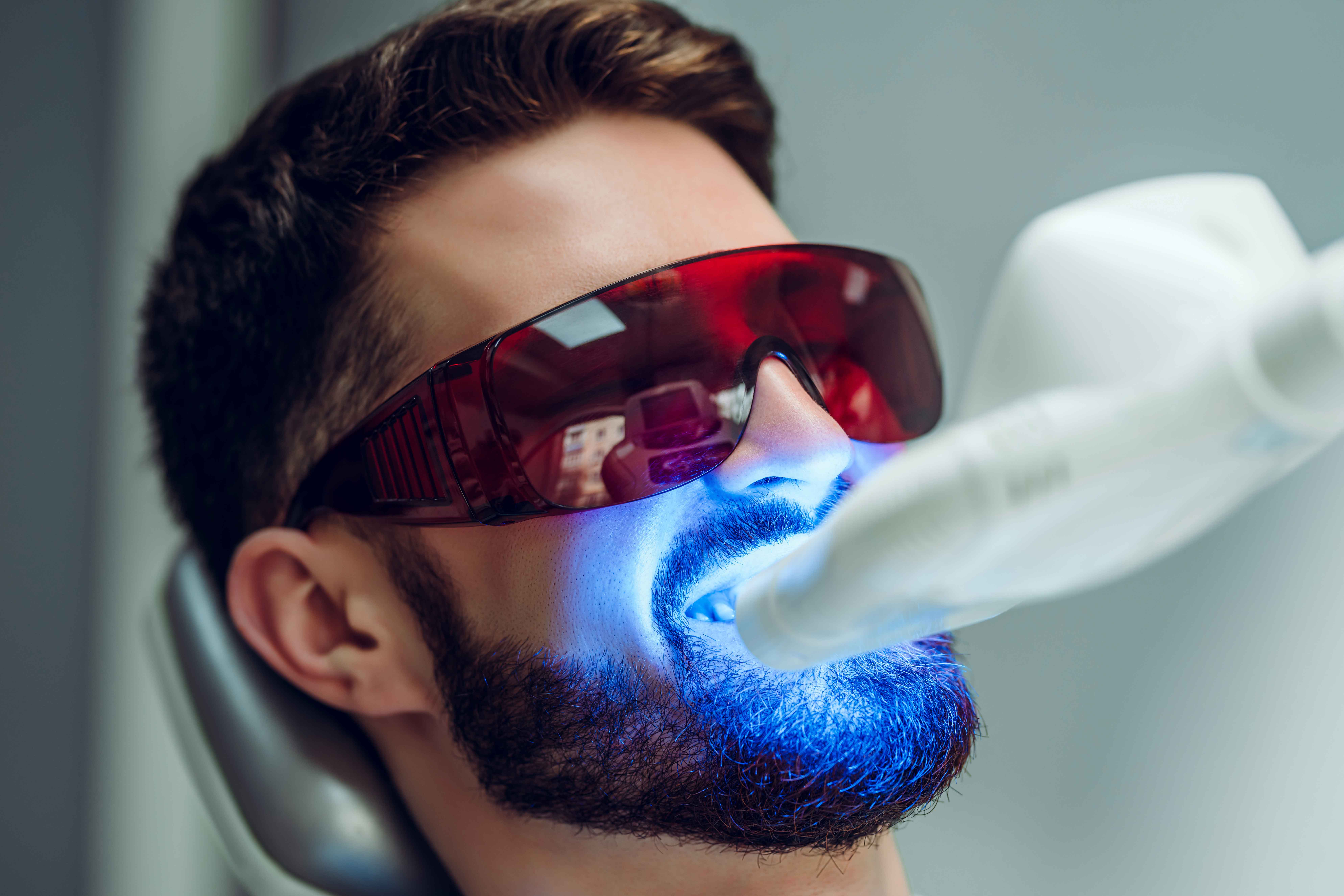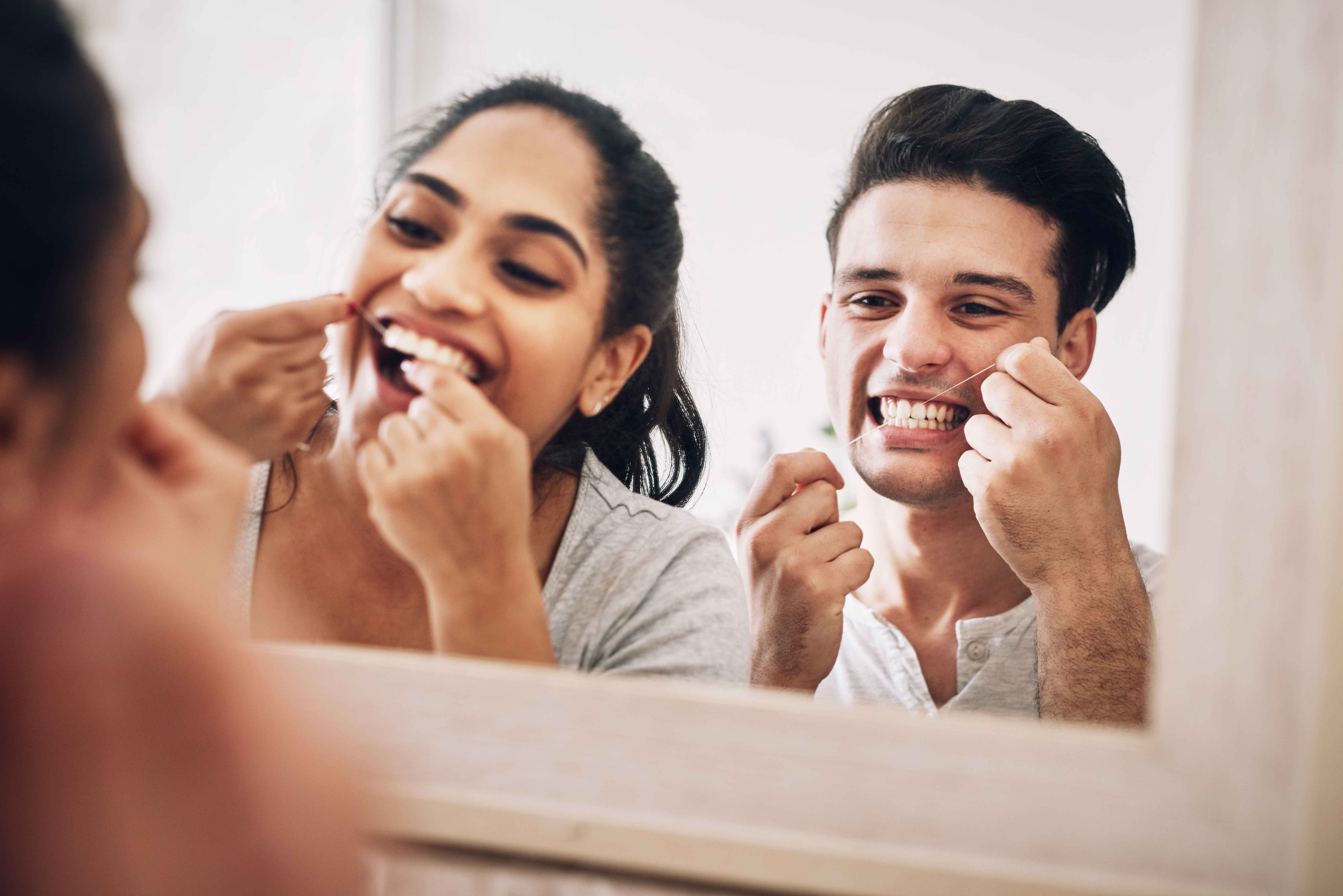How to Whiten Teeth: Effective Methods & Tips for a Brighter Smile

Summary
Key Takeaways
- Takeaway #1: There are several different methods for whitening your teeth. You can opt for over-the-counter options such as whitening toothpaste that contains abrasives, mouthwash, or whitening strips. The most recommended option is to make an appointment with a dentist for a professional in-office bleaching, home-bleaching, or combined bleaching.
- Takeaway #2: Keeping your teeth white requires practicing good dental hygiene. Brush your teeth twice daily, floss at least once a day, and use an antibacterial mouthwash. In addition, keep up with your regular dental appointments for routine cleanings.
- Takeaway #3: For whiter teeth, steer clear of foods and drinks that are sugary, acidic, or that stain, such as beets, berries, soda, coffee, tea, and wine. Also, avoid tobacco products.
Table of Contents

This blog has been reviewed and approved by Dr Robert Lee, a dental professional of 35 years
LEARN MORE >Key Takeaways
Why Do Teeth Get Discolored?
There are many reasons why your teeth might start to discolor. The most common causes of discoloration include:
- Foods and drinks that cause stains, such as berries, soy sauce, and wine
- Acidic foods and drinks, such as tomatoes, citrus fruits, and soda
- Smoking
- Poor dental hygiene
Unavoidable Causes of Tooth Discoloration
- Age
- Dental trauma
- Some medications
- Certain medical conditions
The good news is there are ways to brighten your smile no matter the causes of teeth discoloration.
How to Whiten Teeth: Methods

Teeth whitening methods range from at-home whitening products to professional bleaching.
Brush with Whitening Toothpaste and an Electric Toothbrush
Dental pellicle (a protein-based film) constantly forms and reforms on the surfaces of your teeth. The purpose of dental pellicle is to protect teeth from acid and help remineralize them, but it also attracts chemicals, food substances, and bacteria. This is the initial stage of plaque development and can lead to tooth discoloration, so it’s important to use the right toothpaste and toothbrush to help prevent plaque buildup on the teeth and prevent tartar from forming.
If your discoloration is mild and extrinsic stains are formed, brushing your teeth with whitening toothpaste containing abrasives can help, as these types of stains respond to regular brushing.
Use Whitening Strips
Whitening strips are another great option for whitening your teeth at home. The results from these strips are usually faster and more effective than the results from whitening toothpaste.
However, while the effects of whitening toothpaste may not be as immediate or dramatic as those achieved with whitening strips, consistent use can effectively prevent additional discoloration and gradually enhance the brightness of your teeth over time.
Rinse with Mouthwash
Using high-quality mouthwash can also help remove mild surface stains from your teeth. So, don’t forget to include rinsing with mouthwash as part of your daily oral hygiene routine.
Try Other Whitening Products
You can also try other whitening products to further brighten your smile. Look for whitening serums and on-the-go, enamel-safe whitening pens.
Consider a Home-Whitening Kit
Home-whitening kits from the pharmacy or your dentist may also help whiten your teeth. The kits often use hydrogen peroxide or carbamide peroxide as a whitening agent to remove tooth stains.
Generally, at-home kits use a lower concentration of the whitening agent, so results may take a bit longer compared to a professional bleaching treatment.
Get a Professional Whitening Treatment

If you’ve tried at-home teeth whitening methods, but want a faster outcome, talk to your dentist about a professional whitening treatment.
Your dentist may apply a bleaching agent and then use a laser or other device to whiten your teeth. Results are usually quick, although you may need several visits to achieve your desired look depending on the status of your teeth.
Alternative Methods
When you search online for “at-home whitening solutions,” the internet will offer plenty. Solutions include everything from oil pulling to apple cider vinegar and homemade hydrogen peroxide rinses. Baking soda is also used, but it is a mild abrasive that can ruin tooth enamel.
We do not recommend these alternative methods, as they can irritate your gums or damage your tooth enamel. Opt for products that have the American Dental Association (ADA) Seal of Acceptance.
Additional Tips for Whiter Teeth
Now that we’ve looked at a variety of different methods to whiten your teeth, here are a few extra tips to keep your smile in great shape!
Brush Morning and Night
The first step to whiter teeth is great oral hygiene, starting with brushing your teeth morning and night (and after any stain-inducing foods).
As we mentioned earlier, choose a whitening toothpaste for the best results.
Floss Your Teeth Daily

While flossing doesn’t whiten your teeth itself, it does help prevent plaque buildup that can lead to tooth discoloration. If you want a whiter smile, floss daily to remove food particles and bacteria and prevent plaque from accumulating on your teeth.
Watch What You Eat
Certain foods are good for your oral health, including certain fruits and vegetables as well as fiber- and calcium-rich foods such as yogurt, leafy greens, and celery.
It’s important to limit foods and beverages that can stain your teeth, such as:
- Berries
- Beets
- Soda
- Coffee
- Tea
- Wine
Stop Smoking
Your diet isn’t the only thing that can dull your smile. The nicotine and tar in cigarettes, cigars, and chewing tobacco turn teeth yellow. If you want a brighter smile, it’s best to stop smoking or using other tobacco products.
Visit Your Dentist Regularly
Another way to keep your teeth white is to visit your dentist regularly for a cleaning. During your visit, the dentist or hygienist will clean your teeth to remove plaque and tartar. They can advise you on any next steps you might need to take for whiter teeth.
Possible Side Effects of Whitening
Although our recommended teeth whitening methods are safe, you may experience minor, temporary side effects from products with bleaching ingredients.
Gum Irritation
If whitening chemicals touch your gum tissue, they can cause burning and inflammation.
Tooth Sensitivity
Some whitening agents can temporarily lead to alterations in the enamel and dentin, such as an increase of roughness, porosity and diminished microhardness, making your teeth feel extra sensitive for a short time.
Because of these potential side effects, make sure you carefully follow instructions for any at-home products, only trust in-office teeth whitening to a licensed professional, and avoid alternative remedies.
Smile Brightly Again!

Now that you know how to whiten teeth — from using whitening products such as toothpaste, mouthwash, strips, and at-home kits to professional bleaching — it’s time to make sure you keep them that way.
Maintaining your pearly whites requires practicing excellent oral hygiene, and Oral-B is here to help. Our iO Electric Toothbrush features high-density bristles, leaving you with 100% less plaque than a manual toothbrush..
With the right tools in hand, you can count on Oral-B to support your tooth and gum health.
FAQs
-
How can I keep my teeth white?
-
How can I whiten my teeth with braces?
-
What’s the difference between at-home whitening and professional whitening?
Sources
- https://www.ada.org/resources/ada-library/oral-health-topics/whitening
- https://www.ada.org/resources/ada-library/oral-health-topics/whitening
- https://www.ada.org/resources/research/science-and-research-institute/ada-seal-of-acceptancehttps://pmc.ncbi.nlm.nih.gov/articles/PMC4058574/
- https://pmc.ncbi.nlm.nih.gov/articles/PMC6784469/
- Kumar, M., Madi, M., Vineetha, R. et al. Chromogenic bacterial staining of teeth: a scoping review. BMC Oral Health 25, 55 (2025). https://doi.org/10.1186/s12903-025-05441-4
- Mondelli, Rafael Francisco Lia et al. “Do different bleaching protocols affect the enamel microhardness?.” European journal of dentistry vol. 9,1 (2015): 25-30. doi:10.4103/1305-7456.149634
Table of Contents
- Why Do Teeth Get Discolored?
- How to Whiten Teeth: Methods
- Additional Tips for Whiter Teeth
- Possible Side Effects of Whitening
-
- FAQs
- Sources

This blog has been reviewed and approved by Dr Robert Lee, a dental professional of 35 years
LEARN MORE >
Send Tips
for tips about oral care products, expert advise, and exclusive offers.

Send Tips
for tips about oral care products, expert advise, and exclusive offers.


